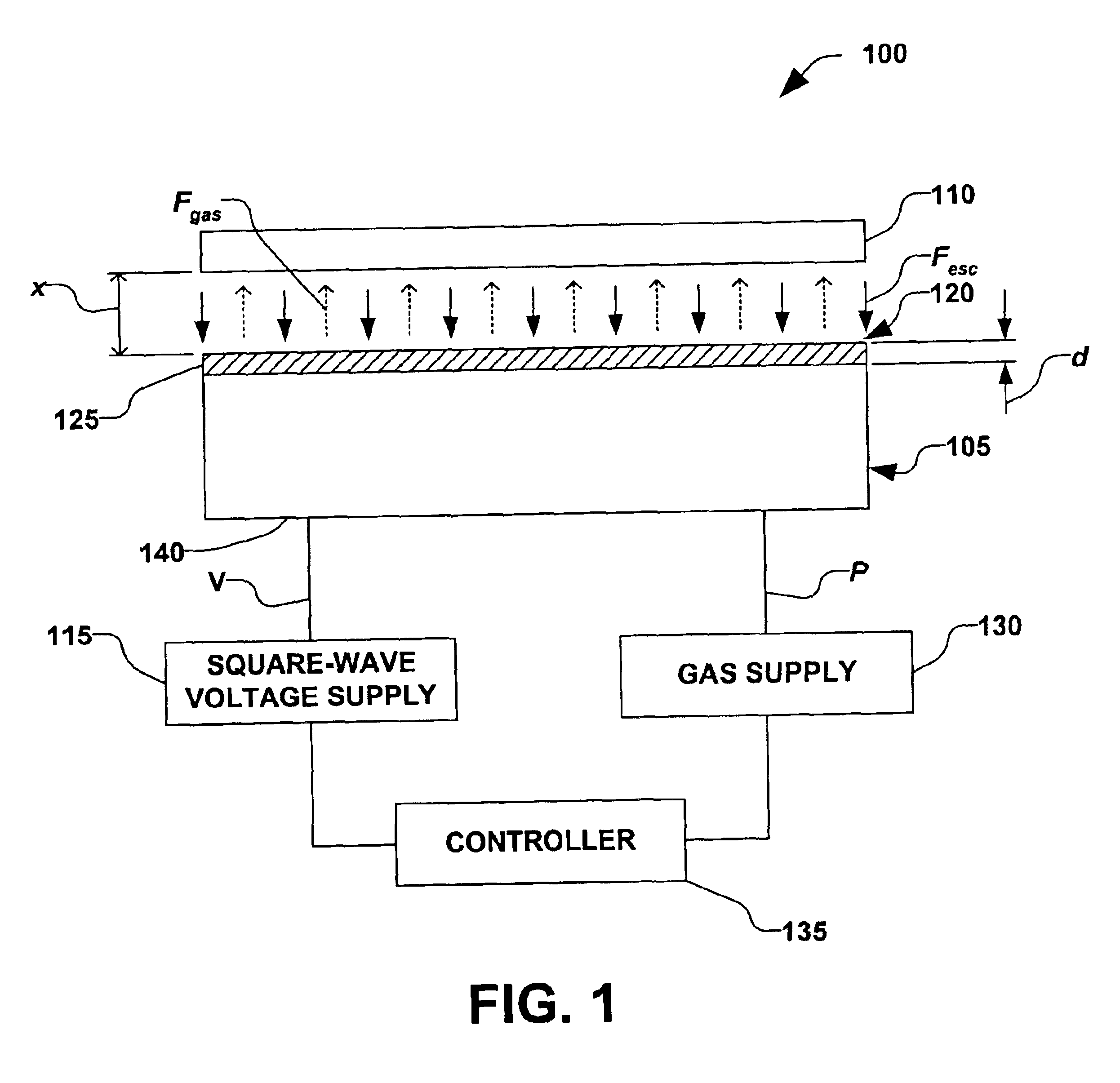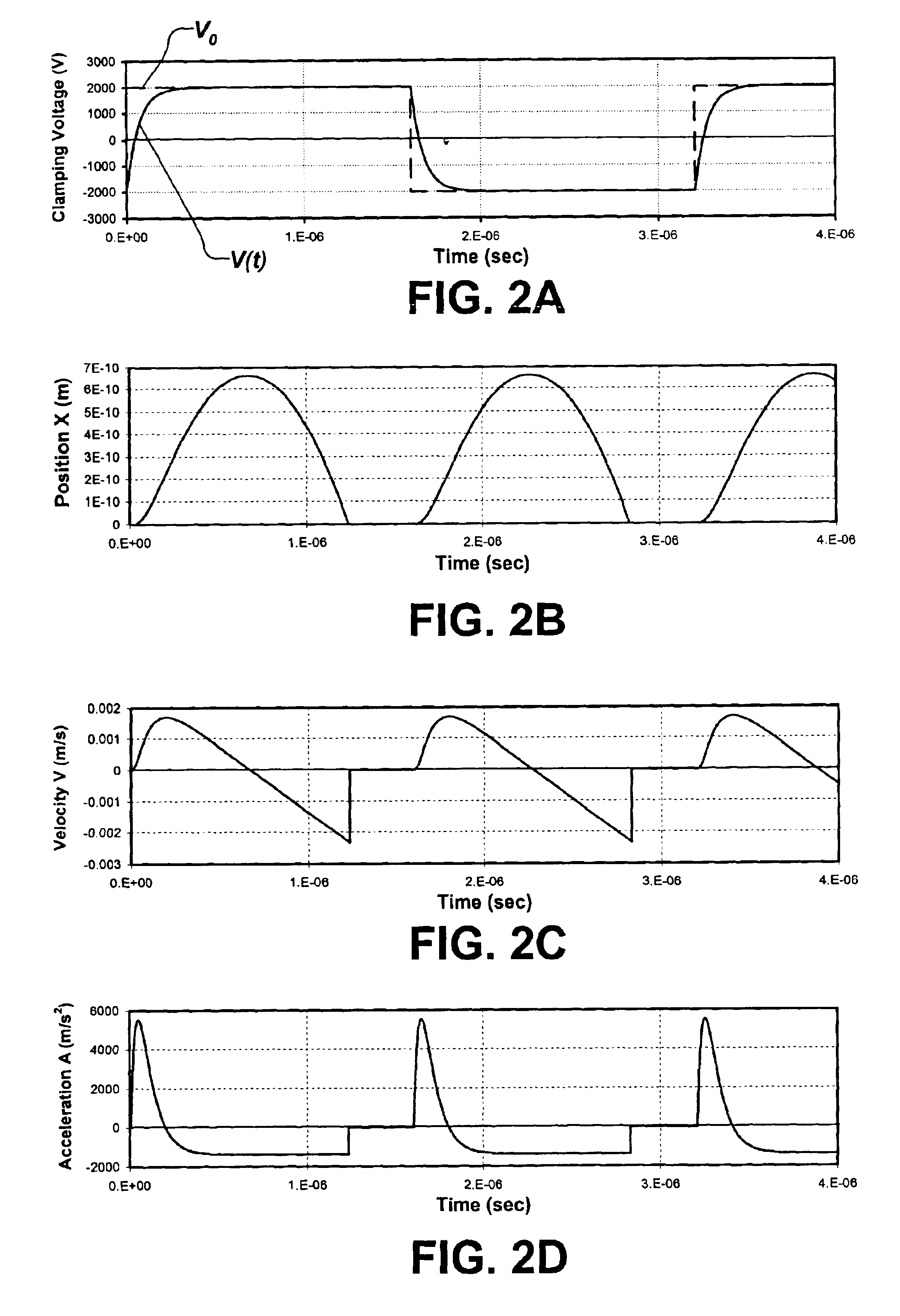Clamping and de-clamping semiconductor wafers on an electrostatic chuck using wafer inertial confinement by applying a single-phase square wave AC clamping voltage
a technology of electrostatic chuck and clamping voltage, which is applied in the direction of magnetic bodies, corona discharge, instruments, etc., can solve the problems of reducing process throughput, unable to remove wafers by typical lifting mechanisms, and a considerable amount of surface time, so as to achieve reliable clamping, simple and inexpensive apparatus, and reduce the effect of de-clamping tim
- Summary
- Abstract
- Description
- Claims
- Application Information
AI Technical Summary
Benefits of technology
Problems solved by technology
Method used
Image
Examples
Embodiment Construction
[0019]The present invention is directed towards a system and a method for clamping and de-clamping a wafer utilizing an electrostatic chuck (ESC). Accordingly, the present invention will now be described with reference to the drawings, wherein like reference numerals are used to refer to like elements throughout. It should be understood that the description of these aspects are merely illustrative and that they should not be taken in a limiting sense. In the following description, for purposes of explanation, numerous specific details are set forth in order to provide a thorough understanding of the present invention. It will be evident to one skilled in the art, however, that the present invention may be practiced without these specific details.
[0020]The present invention overcomes challenges of the prior art by providing a system and a method for clamping and de-clamping a wafer (e.g., a semiconductor substrate), wherein a predetermined square-wave voltage is applied to the electr...
PUM
| Property | Measurement | Unit |
|---|---|---|
| clamping voltage | aaaaa | aaaaa |
| time | aaaaa | aaaaa |
| diameter | aaaaa | aaaaa |
Abstract
Description
Claims
Application Information
 Login to View More
Login to View More - R&D
- Intellectual Property
- Life Sciences
- Materials
- Tech Scout
- Unparalleled Data Quality
- Higher Quality Content
- 60% Fewer Hallucinations
Browse by: Latest US Patents, China's latest patents, Technical Efficacy Thesaurus, Application Domain, Technology Topic, Popular Technical Reports.
© 2025 PatSnap. All rights reserved.Legal|Privacy policy|Modern Slavery Act Transparency Statement|Sitemap|About US| Contact US: help@patsnap.com



